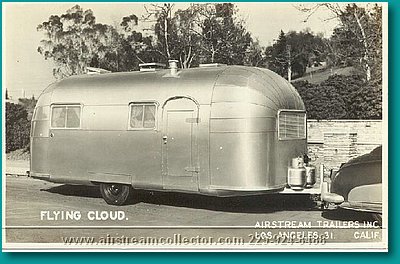In the book Reuben goes through periods of time in which he fights for breath, to escaping in the family's Airstream from that nosy federal agent, all the while having Swede's stories filter in and out of the background. Though many events in this story have no historical meaning, the disease Reuben faces, the family's getaway car, and many of Swede's characters do hold some truth.
- Asthma treatment in the 50's
Throughout the story, Reuben temporarily loses his ability to keep breathing, the only cure being to cover his head with a towel drenched in hot water, with the hopes that the inhalation of the steam will loosen up his lungs (Enger 103). Today, if one were to visit the doctor with these symptoms, they would be diagnosed with asthma, which happens to be extremely common in today's world.The patient would be given an inhaler and/or a nebulizer and would be given instruction pertaining to how and when to use these treatments. Back in 1950 though there was no such thing as inhalers. In fact 1950 marked a significant breakthrough in asthma treatment, with the discovery of Cortisone, a steroid hormone that would later lead to the invention of inhalers. For the first time small amounts of steroid could be delivered directly to the airways, in hopes of clearing whatever blockage was there.("Asthma" website) Reuben probably wouldn't have been able to recieve the proper medication, or even the proper diagnosis, due to his family's lack of money, and the inexperience/lack of knowledge of local doctors, forcing him to fall back to ineffective treatments that date back to long ago.
Traveling along with them on their seemingly endless roadtrips, the Airstream provided a comfortable haven for Reuben, Swede, and their Dad to escape to when the world didn't seem to be in their favor. Of more than 300 trailer builders operating in 1936, Airstream was the only one to emerge from the Depression years. Though the company faced many challeges in the coming years, by 1950 it had become a world icon, alongside products such as Coca-Cola.("Airstream Comp. History")
Throughout the book,mentions of famous Western Outlaws are tucked in between the lines of prose. Comparisons are made between Davy and outlaws like Jesse James and Billy the Kid. Swede uses many of these historical figures in the stories she writes. Though her central hero, Sundown does not prove to have any historical background behind him, many of the others do, providing an old Western twist to the tone of this story.

|  |
|
Jesse James was one of history's most well known criminals. He was considered a vicious man and led a long life of crime. Throughout his teenage years, James had wanted to join the rebels cause, but was considered much too young. Finally in 1862, he was accepted into a gang known as Quantrill's Raiders. After a couple of years Jesse had gained enough experience to form his own gang, allowing only people who wanted to get money the easy way the opportunity to join. Throughout his life he and his gang successfully robbed many banks, and trains, but his downfall came, ironically by a member of his own gang, Bob Ford . ("Jesse James")
Also an outlaw, Pitts was the brother of Jesse James and fought alongside him in his gang, known as the James/Younger Gang. Though not as famous as his sibling, Charlie did help out on many of the raids, and was later killed in a shoot-out soon after the famous Northfield Raid in the year 1876. ( "Charlie Pitts")
Younger was also a member of the James/Younger Gang, joining shortly after the Civil War had ended. He went on to become a trusted and influential member of the gang. At the unsuccessful attempt to rob a bank in Northfield Minnesota, Cole and two of his brothers, also members of the gang, were caught and sentenced to life imprisonment. Both of his brothers died in prison, but Cole was completely pardoned in 1903 and returned to Missouri, where he lectured, traveled with a wild West show, and peacefully worked at various jobs.( "Cole Younger" )
Of all the Western outlaws, none are more fondly remebeed in story and folklore than the "Robin Hood of the West"--Butch Cassidy. As a teenager Cassidy came under the influence of an old rustler by the name of Mike Cassidy, and soon after, left his home in Utah to ride the outlaw trail. For his first few years away from home Butch was something between an outlaw and a migrant cowboy, but that quickly changed by 1896, when he became considered the master planner of the robbery of trains, banks, and mine payrolls. With his charm and quick wit, coupled with his fearlessness and bravery, Cassidy never lacked willing companions, and soon formed his own gang known as the"Wild Bunch". Cassidy and his partners put together the longest sequence of successful bank and train robberies in the history of the American West. What happened to Cassidy still remains a mystery, but he still continues to be thought of as a classic Western outlaw. (http://www.media.utah.edu/UHE/c/CASSIDY,BUTCH.html)
|
 |
|